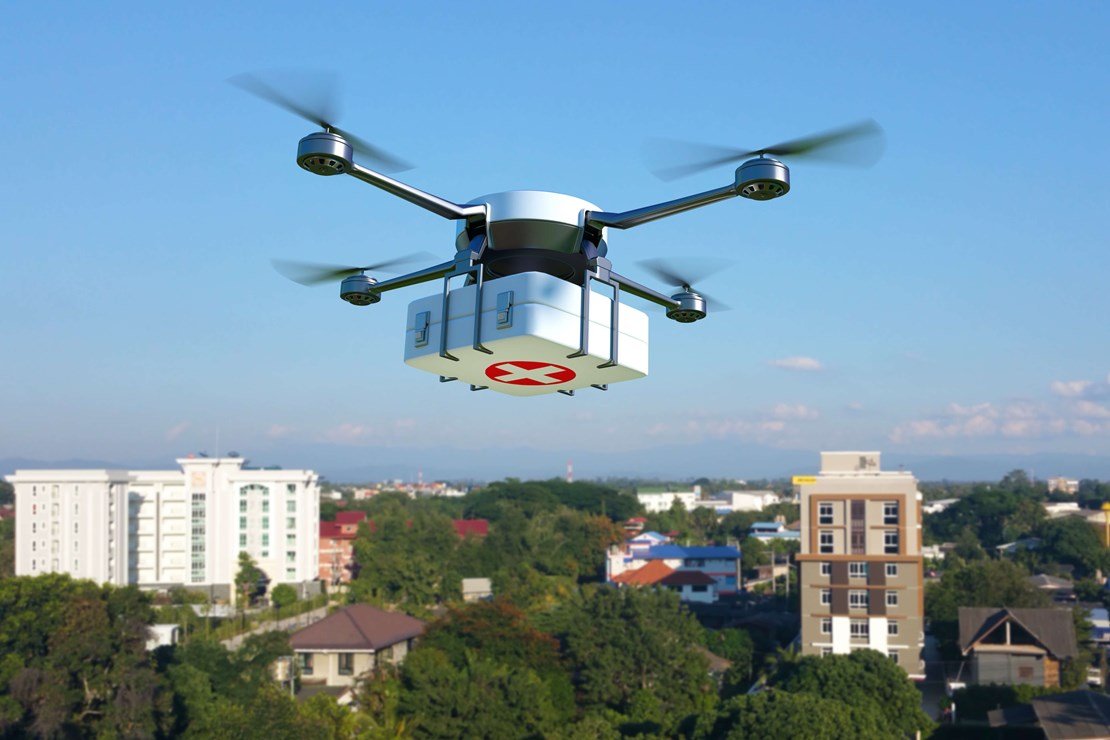
Enabling lifesaving BVLOS
Introduction
The world has witnessed various incredible advances in drone capability over recent years. When it comes to emergency response, drones hold immense potential, yet there are still many vital areas where this technology could deliver far more.
These areas include providing invaluable situational awareness to mission commanders, helping to locate an increasing number of high-risk missing persons, and delivering medical aid and life critical equipment more quickly than conventional means – saving time where every minute counts.
Challenge
Thunderbird is a charity set up by the late John Bullough MBE, whose mission is to provide life-critical support by bringing emergency services together and enabling emergency service drones to operate Beyond Visual Line of Sight (BVLOS).
At present, realising the capabilities of drones at scale in the UK holds immense challenges and cost implications, with several public sectors addressing parallel challenges, focusing on their own specific goals. It’s because of the scale of this challenge that coordinated efforts are so vital - avoiding duplication and maximising investment of limited public resources, scaling impactful capabilities sooner.
Solution
Thunderbird is founded on the passionate belief that together as a collective, more lives can be saved sooner, and with fewer resources - through a multi-agency, systems approach. As Thunderbird’s ongoing technical partner, Ajuno is closely supporting the charity to deliver its mission.
To date, we have achieved this in three ways:
1. Technical community facilitation: We have been fundamental in helping Thunderbird maintain strong relationships and collaboration with critical stakeholders across the UK’s emergency BVLOS ecosystem. A core component of this has included facilitating a quarterly Steering Committee, bringing together emergency service and SAR drone leaders from across the UK. We have continuously worked with Thunderbird to identify ecosystem needs, strategically focusing collective resources.
Additionally, we have facilitated a number of workshops on essential themes, such as data sharing and defibrillator delivery, to facilitate shared learning, key value understanding and aligned operational perspectives. All of this work has informed the drone industry’s development of systems and equipment to support the emergency services need, accelerating the path to providing life-critical support for the benefit of everyone.
2. Establishing regulatory pathway: Currently, no ‘blue light’ mechanism exists for emergency drone response (namely, the acceptance of increased risk in life-critical missions for the emergency services). We are working with the CAA towards better quantifying and balancing the risk to other air users and people on the ground with the risk to the casualties the drone is responding to. This requires cross-government agreement and additional mitigation measures, such as advanced training.
Another crucial area for scaling emergency drone operations is public support. Public perception of drones is mixed, so effective public engagement and integration is needed, as well as establishing pan-emergency public engagement strategies and plans for drones.
3. Technology evaluation: Following Thunderbird’s systems approach, we have developed a clear understanding of principle use cases and the system requirements that support these, evaluating the latest technologies around the world against the requirements of the emergency services.
The impact
Looking ahead to 2025, in addition to continuing our support of Thunderbird in all key areas above, we have also produced a white paper - Lifesaving Beyond Sight. This aims to accelerate our shared journey to routine, lifesaving BVLOS drone operations, achieving this faster and with less.
Building from extensive collaboration within the Thunderbird community and our October 2024 steering committee, the paper focuses on eight case studies of leading UK projects, offering valuable, accessible lessons to accelerate routine, lifesaving BVLOS operations. Ten priority themes and three strategic focuses are identified, and together with the Thunderbird community, we will be refining these themes into clear 2025 goals, fostering further innovation and collaboration in emergency drone operations.







